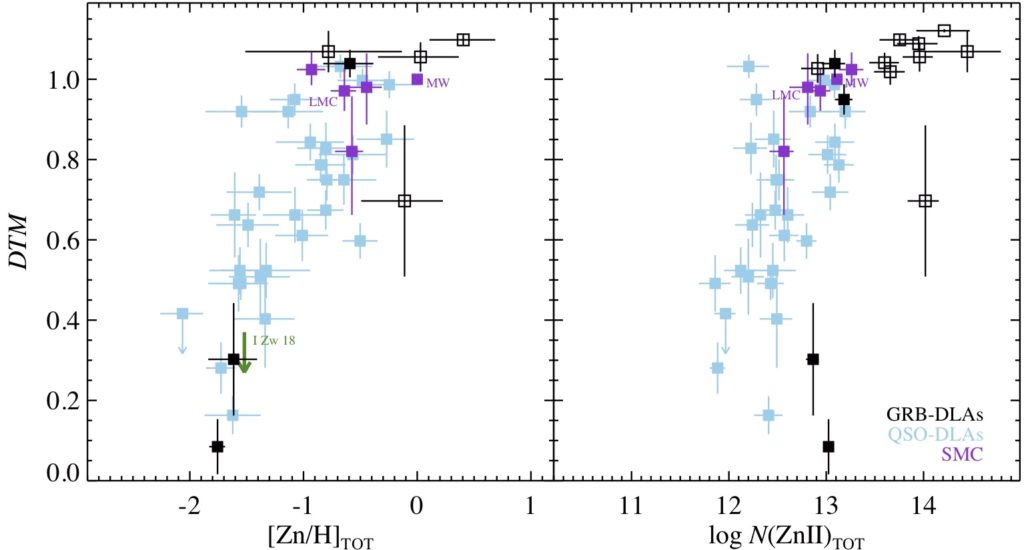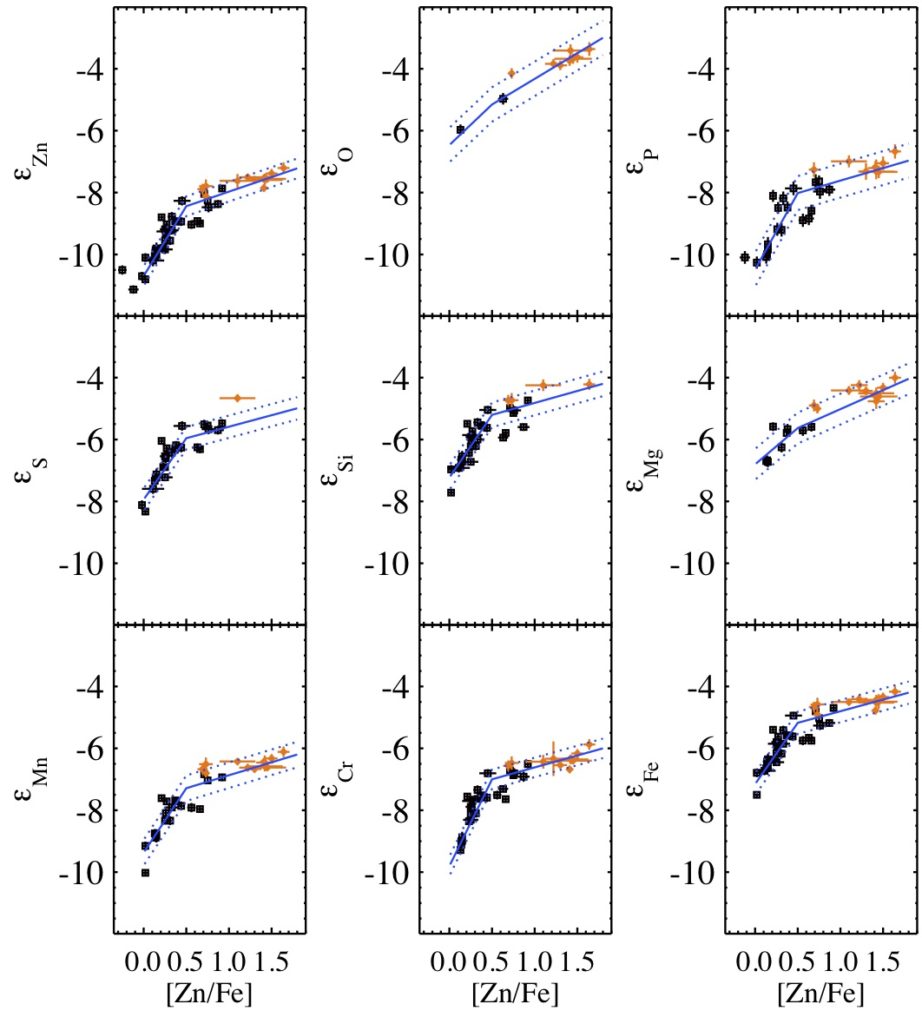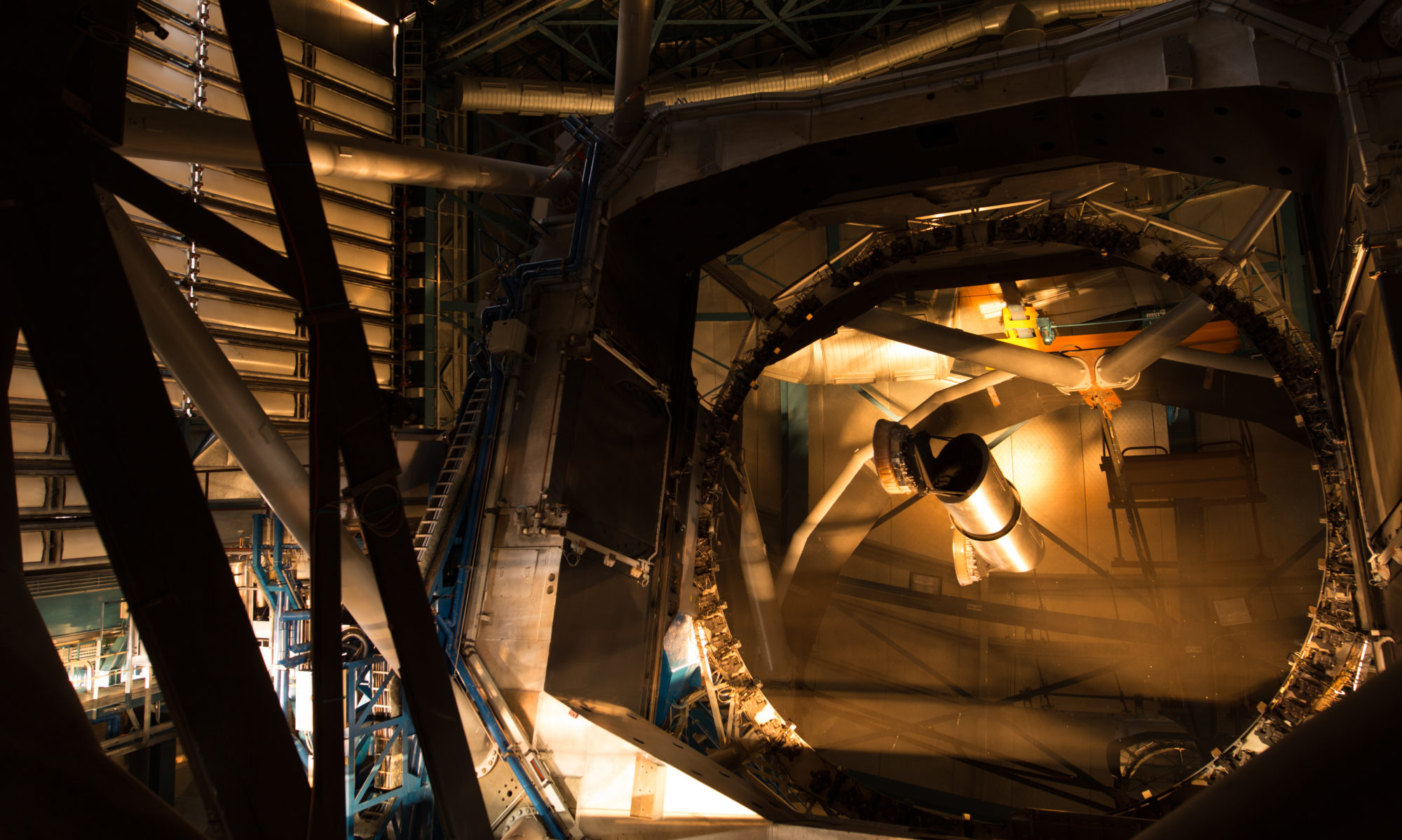Cosmic dust is a fundamental part of the ISM, overall making up about 50% of all the metals in the ISM. Dust is also an essential ingredient of star formation (due to the cooling effect of dust particles), planet formation (providing the first seeds of solid aggregation, e.g. Testi et al. 2014), and the formation of molecules (e.g. Cazaux et al. 2011).
The origin of dust is still a debated topic (e.g. Mattsson & Andersen 2012, Matsuura et al. 2015), whether the bulk of dust grains have been produced by winds in Asymptotic Giant Branch (AGB) stars, cooling-down SN ejecta, or growing in the ISM. However, the presence of large amounts of iron in dust, as inferred from dust depletion, challenges the possibilities of AGB stars and SNe to be the main dust producers (e.g. Dwek 2016). AGB stars seem very inefficient at producing iron-rich dust, but instead could produce iron-free silicates (e.g. Norris et al. 2012). While far-infrared and submillimeter observations of SN 1987A have suggested that core-collapse SNe can produce significant amount of dust (0.4 – 0.7 M⊙, Matsuura et al. 2011), only a fraction of this dust may survive the SN reverse shock (e.g. Hirashita et al. 2017). In addition, no dust emission has been observed towards SNe Type Ia, where most Fe is produced.
The dust-to-metal ratio
In De Cia et al. 2013 and 2016 we found that the dust-to-metal ratio (dtm) in distant galaxies (traced by DLAs and GRB host galaxies) increases with metallicity. The dtm represent the efficiency of dust production of a system given the availability of metals. The dtm can be measured with normal techniques only for local galaxies (e.g. Lisenfeld & Ferrara 1998), because it is non-trivial to measure the dust and metal masses in distant galaxies without invoking unknown conversion factors (e.g. from CO or mm/IR luminosities to dust masses). Absorption-line spectroscopy (the depletion) offers an attractive alternative to measure the dtm out to high z. Our results of an increasing dtm with metallicity in DLAs is also in agreement with the dtm measurements of the nearby low-metallicity I Zw 18 (Herrera-Camus et al. 2012).

Origin of dust
The evolution of the dtm with metallicity can help constraining models of the origin of dust, whether from stellar sources or by grain growth in the ISM. In Mattsson, De Cia et al. 2014) we found that only including grain-growth in the ISM it is possible to explain the observed dust-to-metal ratios in distant galaxies, which increases with metallicity.
Dust composition
In De Cia et al. 2016 we derived the abundances in dust of different elements, based on the observed relative abundances in the gas and the dust-depletion analysis. Based on these elemental abundances in dust, in Mattsson, De Cia et al. 2019 we found that about half of the carbon-free dust should be composed of metallic iron (likely in the form of inclusions in silicate grains) and/or iron oxides (for example Wüstite) to account for the observations with a simple model. The other half is dominated by a mix of iron-poor and iron-rich olivines and pyroxenes.

